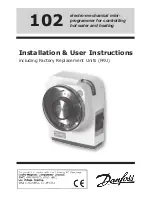
Appendix B
Troubleshooting and Common Questions
B-4
ni.com
I have GPIB-ENET interfaces as well as GPIB-ENET/100 interfaces.
Why doesn’t the NI Ethernet Device Configuration utility recognize
my GPIB-ENET interfaces?
The GPIB-ENET/100 uses a configuration protocol that can communicate
with the NI Ethernet Device Configuration utility. Because GPIB-ENET
interfaces are not compatible with this configuration protocol, the utility
does not recognize them on the network.
What do I do if the software verification test fails with an error?
Refer to the
Troubleshooting Software Problems
section of this appendix
for information about what might cause this test to fail. If you already have
completed the troubleshooting steps, contact National Instruments.
My driver is not communicating with the GPIB-ENET/100. What
should I do?
Make sure that the GPIB-ENET/100 is configured properly. To isolate the
problem, try to
ping
your GPIB-ENET/100 to make sure it is recognizable
on the network.
ping
is a network utility that sends a packet to a
device/host on the network, then waits for it to be echoed back, which
indicates an active device/host. The
TX
(transmit) LED should blink in
response to a successful ping.
Use one of the following commands:
/usr/sbin/ping
IPaddress
/usr/sbin/ping
hostname
where
IPaddress
is the IP address assigned to your GPIB-ENET/100, and
hostname
is the hostname or the name assigned to your GPIB-ENET/100
in the
/etc/hosts
file. If
ping
fails, the GPIB-ENET/100 might not be
properly configured or installed, or perhaps you did not ping the correct
unit. Refer to Chapter 2,
Then run
ibtsta
again.













































